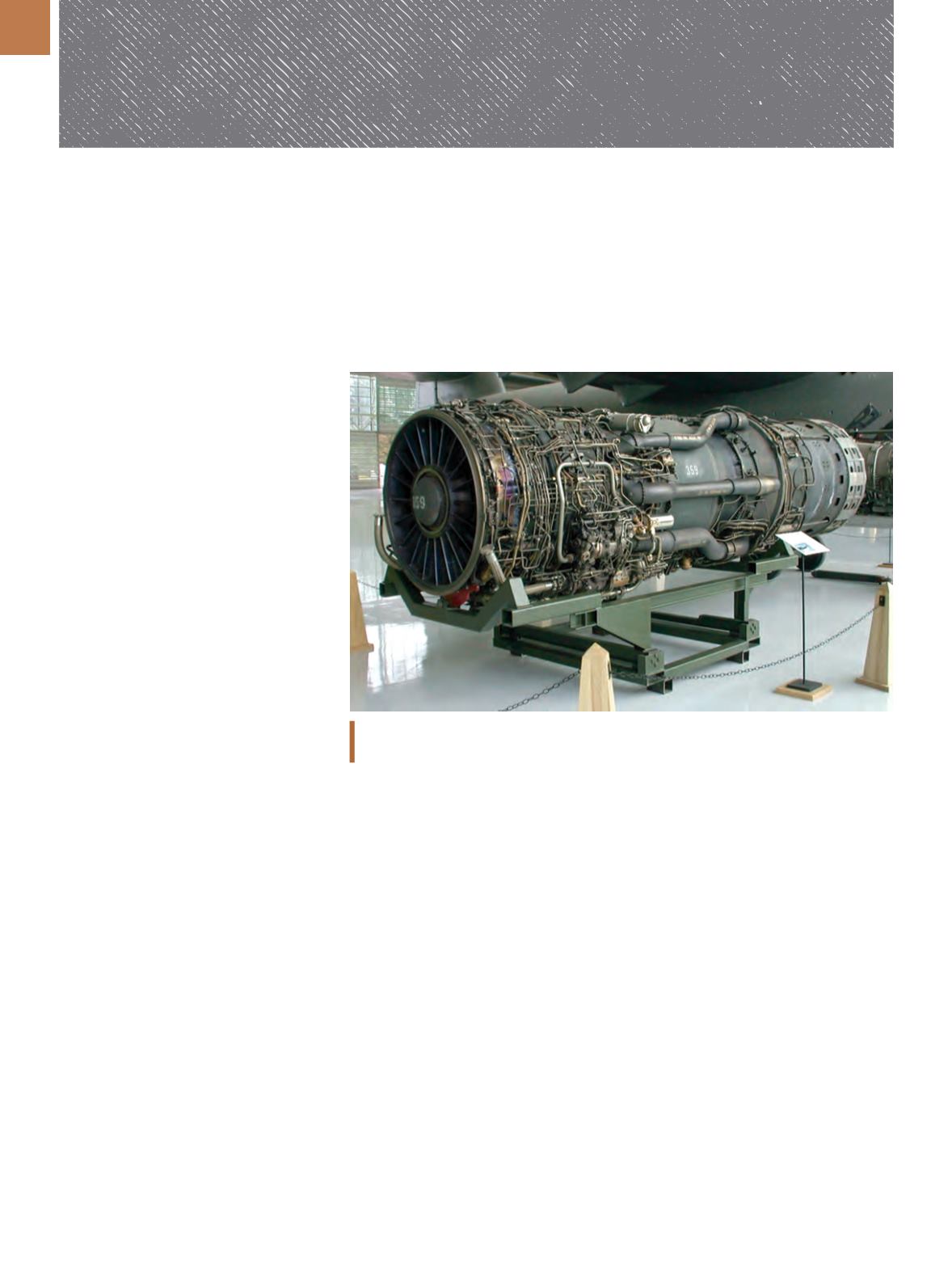

A D V A N C E D M A T E R I A L S & P R O C E S S E S | M A Y 2 0 1 5
2 8
METALLURGY LANE
Metallurgy Lane, authored by ASM life member Charles R. Simcoe, is a continuing series dedicated to the early history of the U.S. met-
als and materials industries along with key milestones and developments.
TITANIUM: A METAL FOR THE AEROSPACE AGE — PART III
TITANIUM’S POTENTIAL WAS NOT FULLY REALIZED UNTIL 1956 WHEN METAL PRODUCTION REACHED
5200 TONS AND SPONGE PRODUCTION NEARLY 15,000 TONS.
W
hile the business side of tita-
nium was improving, most of
the alloy product was going
into jet engines. Airframe manufactur-
ers were still grappling with problems
in sheet material, as better alloys were
needed to form parts and improve
strength. More uniform properties were
also needed. Variation in properties
from one supplier to another—or even
within the same shipment—was a cause
for concern. The learning curve for mak-
ing titanium sheet products was more
difficult than expected. In fact, the De-
partment of Defense (DoD) initiated a
$3.5 million project in 1956 to combat a
host of sheet metal problems.
This project, called the DoD Sheet
Rolling Program, was administered by
the National Materials Advisory Board
(NMAB) of the National Academy of Sci-
ences. Representatives from all the ma-
jor airframe manufacturers, jet engine
builders, titanium producers, the armed
forces, and other government agencies
with an interest in titanium assembled
at NMAB headquarters in Washington.
One of the most comprehensive techni-
cal programs ever undertaken in metal-
lurgy was designed by this group to over-
come the problems hindering the rapid
growth of titanium in airframe construc-
tion. Three promising alloys, including
Ti-6Al-4V, were selected for study.
Over several years, this project pro-
duced not only improved alloys and bet-
termaterial quality, but also a deeper ap-
preciation of the reliability of titanium as
an aerospace material. An indirect bene-
fit was the close relationships formed by
individuals within all parts of the indus-
try participating in this common goal.
PEAKS AND VALLEYS
Improved business conditions,
along with rising enthusiasm within
the industry, continued into 1957. First
quarter metal shipments reached 2200
tons, which indicated an annual goal of
perhaps 9000 to 10000 tons. Titanium
was on its way to becoming the aero-
space metal that its promoters had
hoped for. Then an earthquake shook
the aerospace and titanium industries:
Defense Secretary Charles Wilson,
formerly of General Motors Corp., an-
nounced a decision to base the U.S. de-
fense strategy on missiles rather than
manned aircraft. The accompanying
reductions and contract cancellations
rocked the industries, as this major
cutback in aircraft and engine produc-
tion meant a near total collapse of the
titanium market. The most promising
metal of the postwar era—which had
received an estimated $200 million in
government support—was in serious
danger of extinction by the very De-
fense Department that had brought it
into being.
The ramifications were swift and
drastic. Orders were cancelled and by
the fourth quarter of 1957, titanium
shipments skidded to 350 tons. The
price of sponge plunged to $2.25 per lb
as production mounted to 17,000 tons
in addition to competition from 3500
tons of Japanese imports. Metal prod-
uct prices decreased to an average of
$10 per lb. Prices continued to decline
over the next several years to as low as
$1.60 for sponge and $7 for metal.
Many bailed out of the industry.
The Remington Arms Division of DuPont
sold its 50% interest in Rem-Cru to part-
ner Crucible Steel Co., who remained
Pratt & Whitney J58 engine on display at the Evergreen Aviation & Space Museum in Oregon.
Jet engines were the first application to use titanium alloys. Courtesy of
en.wikipedia.org.


















